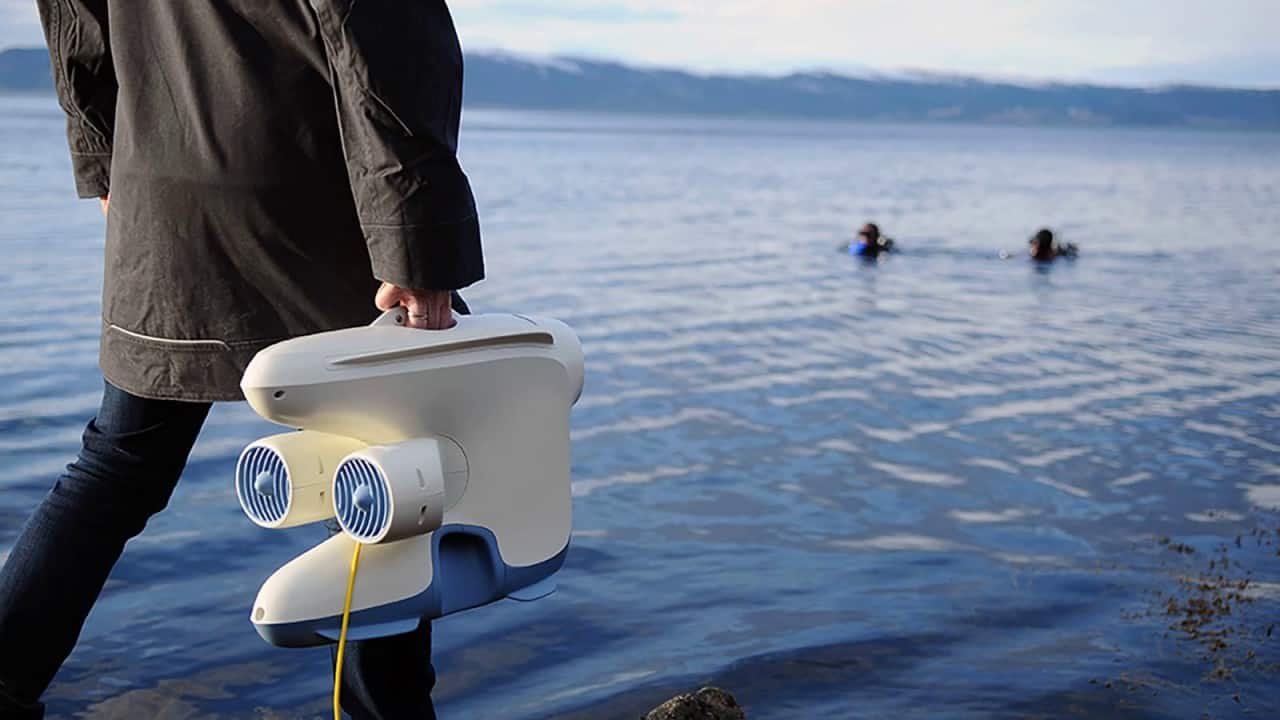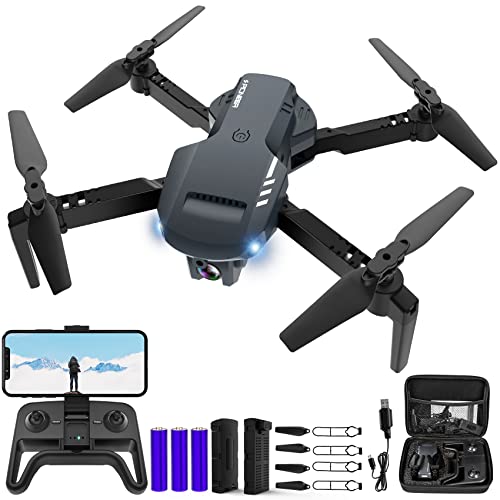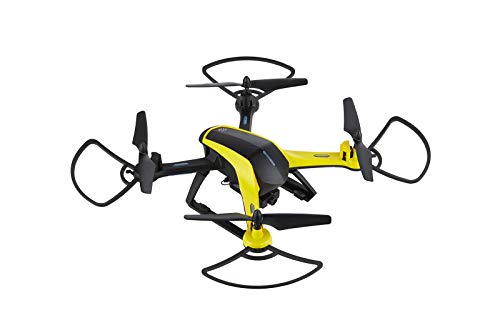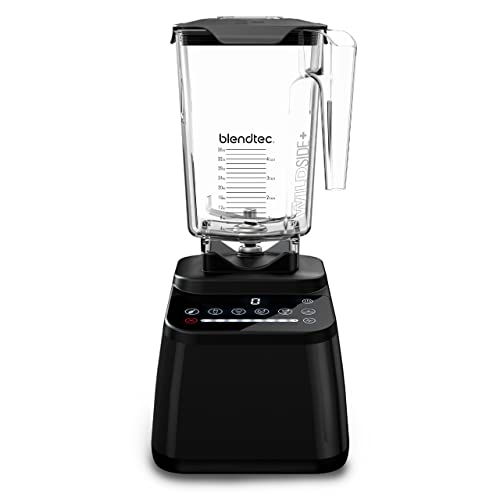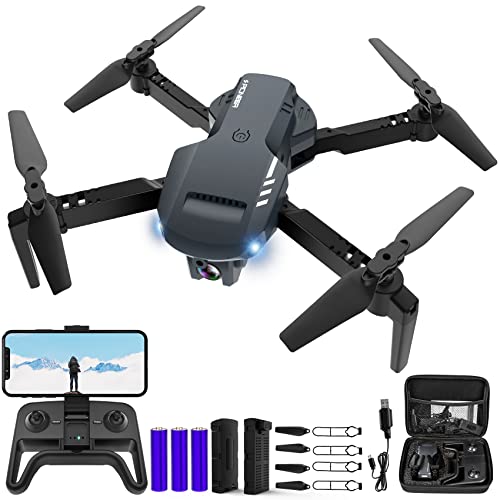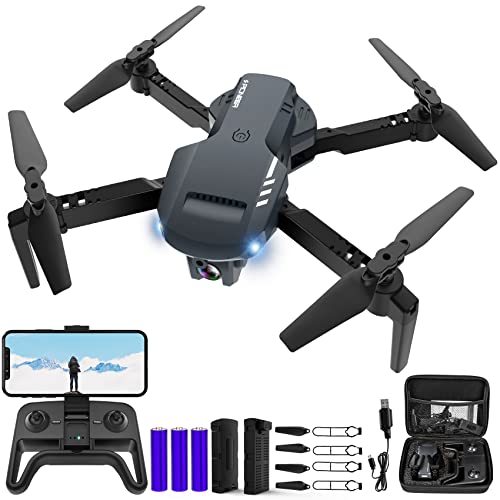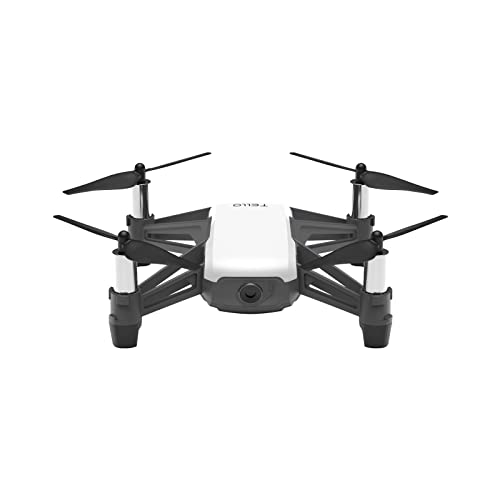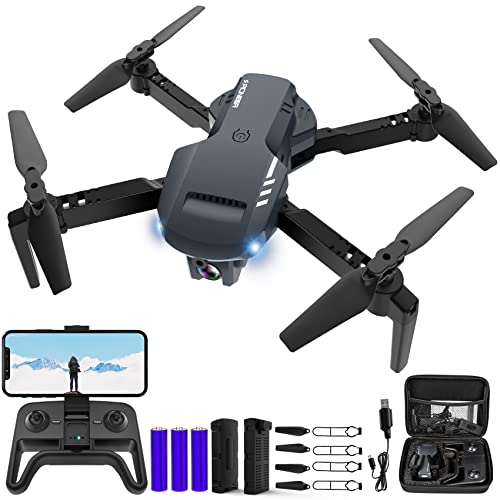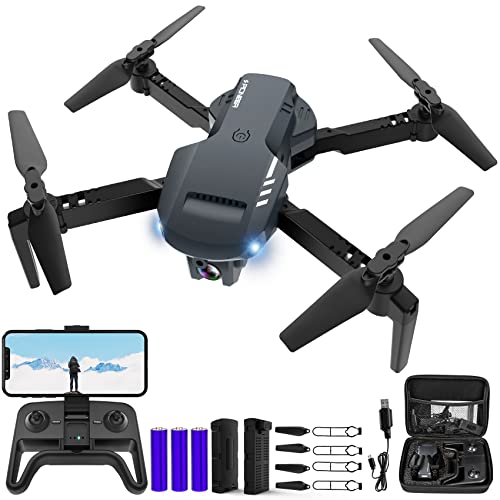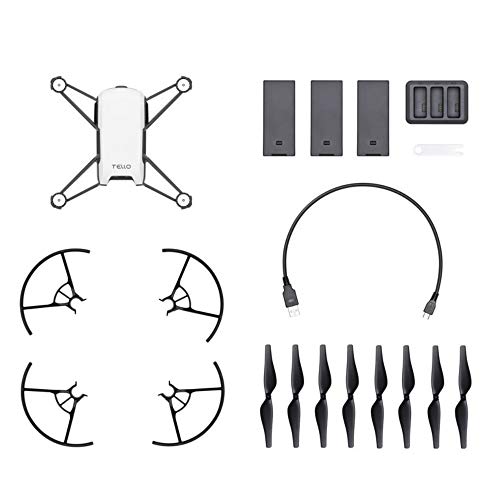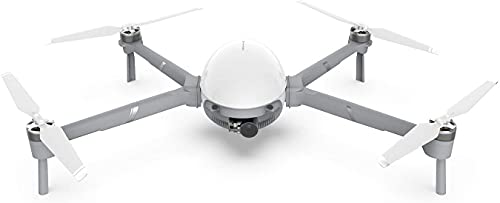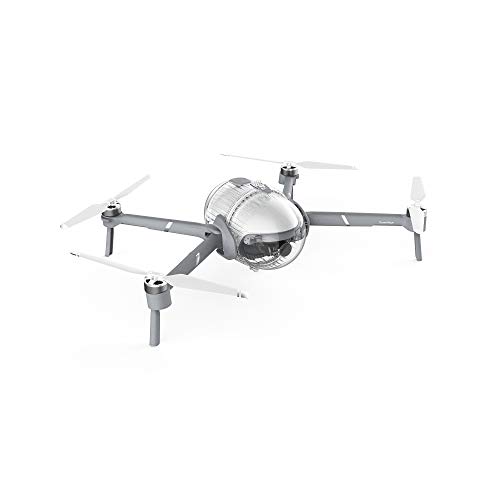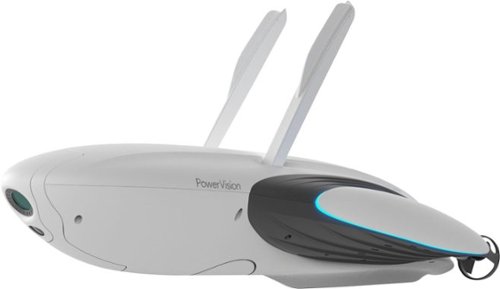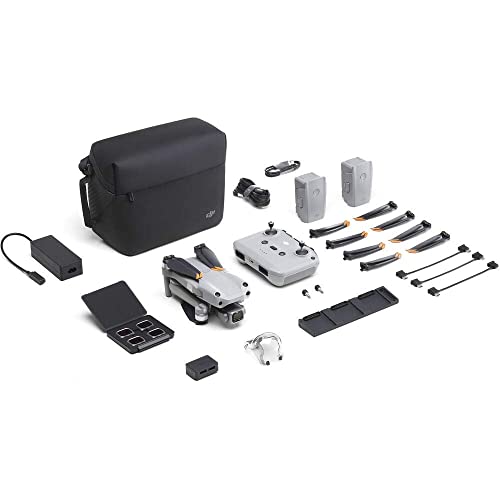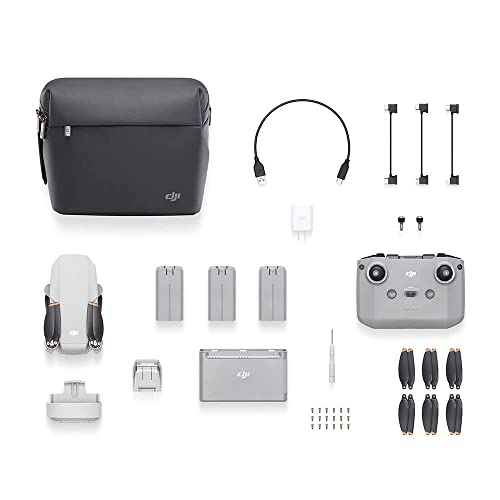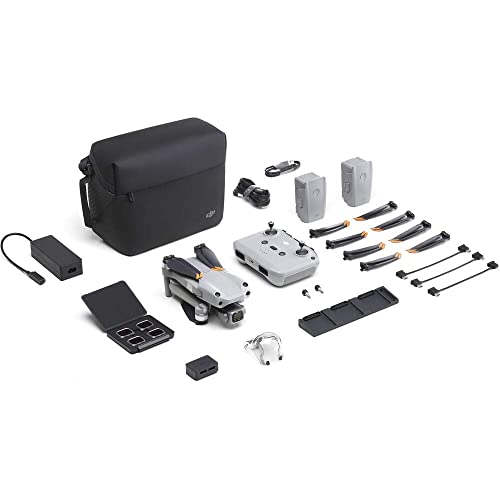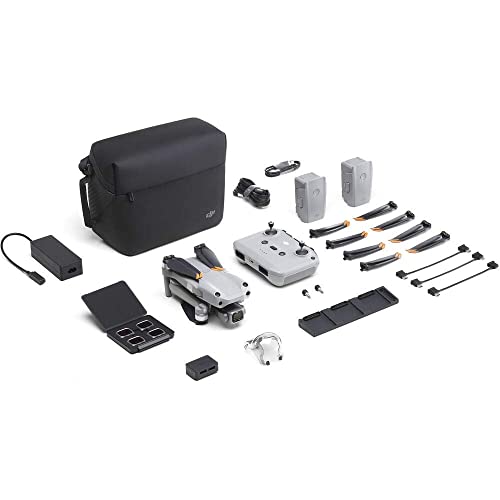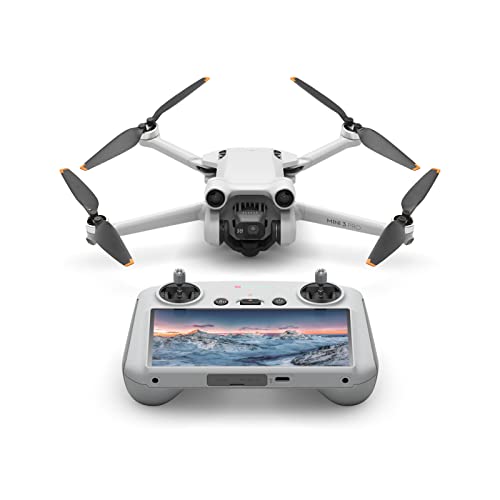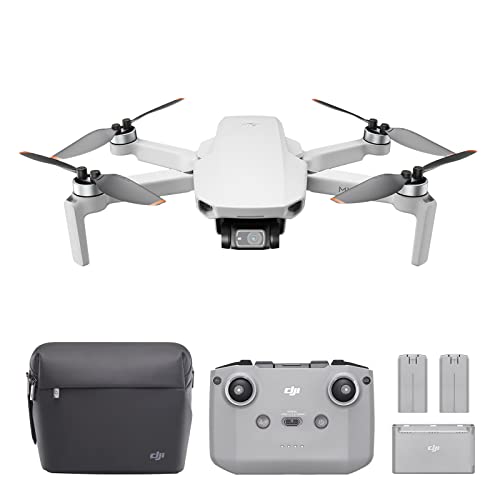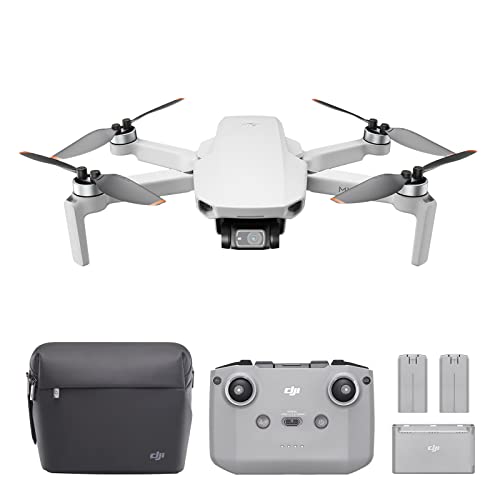To find the best VR drones for your needs, you must consider several elements of each model drone and each model of VR goggles. We recommend that you favor virtual reality drones with longer battery life, powerful HD cameras, multiple assisted flight modes, and that are very durable. It’s a good idea to consider VR drones that are packaged with FPV goggles that have quick setup and pairing times. When buying a drone for FPV VR Drone racing, it is much easier to match the VR headset brand that you already own or drones that come with FPV goggles. When you decide on a VR drone model, always look for the number of axis points on its gimbal, which can provide much smoother video footage. Motion sickness is a real thing in the VR world, and, just like in real life, no one likes turbulence. You may also want to take a look at our list of best drones in the market.
After analyzing specs and hundreds of reviews amongst many different VR drone products with varying price points and feature sets, we’ve determined that the DJI Mavic 2 Pro is the best of all VR drones on the market today. You won’t see the Bebop, Phantom, or Tello on this list- but keep reading about our other top picks for the best drones on the market.
Top 10 Best VR Drone
#1 DJI Mavic 2 Pro VR Drone
Award: TOP PICK
WHY WE LIKE IT: The Mavic Pro is an excellent choice that shoots gorgeous high-quality 4K video and stands above other virtual reality flying drones in its price range. The crisp image quality is due to the one-inch 20-megapixel sensor on its HD camera that’s matched with a multi-axis gimbal providing an immersive FPV VR flying experience for the outdoors. Its capabilities for capturing excellent video by an experienced pilot familiar with drone technology result in breathtaking footage.
- Easy to pair with matching DJI Goggles
- 31 minute flight time per charge
- 20 MP 1″ lens CMOS sensor
- On the more expensive side
- Hyperlapse video is unstabilized and only 1080P
- Some visual noise is a problem above ISO 100
The DJI Mavic Pro 2 with DJI Virtual Reality Headset is our Top Pick with superior image and HD video quality, obstacle avoidance, and excellent battery life. The brand new 1-inch CMOS sensor on the Hasselblad L1D-20c digital camera has an advanced active sensing area making it easier than ever to shoot high-quality videos and photos even in low light settings. The remote control utilizes an ultrabright 5.5-inch 1080p display that helps you to maintain clear visibility even in direct sunlight.
Multiple intelligent flight features make this VR piloting experience exciting for beginners and FPV drone racing pros alike. The pause button acts as “emergency braking” and will stop the unit in its tracks, causing it to hover until you command it otherwise. This feature can be a great safety net in case a flight experience becomes too overstimulating. This model comes highly recommended for anyone looking for the best FPV racing drone.
#2 Autel Robotics Evo II VR Drone
Award: HONORABLE MENTION
WHY WE LIKE IT: The Autel Robotics EVO II caught our attention as an outstanding photography drone. Not only does it have the most extended battery life, but it shoots 4K video as well as 8K. This orange flying drone is an excellent fit for both novice FPV Virtual Reality racers and pro-VR pilots alike.
- 40 minutes of flight time
- 1/2″ CMOS 48MP Quad Bayer HD camera
- 20 MP 1″ lens CMOS sensor
- Not as feature-rich as some on market
- Less intuitive remote controller than some
- Less video compression making bulky files
Every component of the EVO drone goes through multiple tests before being assembled. Quality control is further ensured for each quadcopter by being required to pass a rigorous flight test before it leaves the factory. The EVO II can be equipped with an 8K sensor, 6K Pro Sensor, or a Dual sensor that combines an 8K sensor with a thermal sensor. Each of these options is priced accordingly, but the ability to switch out sensors is unheard of in the consumer and pro-market.
As far as the VR flight experience goes, the Autel EVO II comes equipped with 12 omnidirectional visual sensors and two ultrasonic sensors on the bottom of its body for superior obstacle avoidance. It is straightforward to operate in VR flight with three intuitive smart flight modes and the power to handle high winds. You may also want to check out other drones that feature the best selfie drones.
#3 DJI Mavic Air 2 VR Drone
Award: BEST VALUE
WHY WE LIKE IT: The DJI Mavic Air II is the best value VR drone, in our opinion. The 1/2″ 48MP CMOS image sensor, quick connectivity to FPV Goggles, compact size, and competitive price point make this the best Virtual Reality drone bang for your buck.
- Over 30 minutes of battery life
- 48-megapixel camera
- Stable in strong winds
- No slow panning up and down
- Bulkier controller than some
The DJI Mavic Air 2 features an incredible high-quality balance between compact size, picture quality, and other nice extras for a photography-focused drone. Shooting 48MP stills, 8K Hyperlapse, and 4K video at 120 Mbs is impressive. The DJI Mavic Air 2 VR Drone comes equipped with AirSense, which receives automatic dependent surveillance-broadcast (ADS-B) signals from nearby crewed aircraft and displays their location on the remote control’s screen. Similar to the DJI Mavic Air Quadcopter, the Mavic air controller is bigger & bulkier than its predecessor, but it’s a leading DJI drone to use.
The DJI Mavic Air 2 offers three photography and video modes: HDR, Hyperlight, and scene recognition making this VR drone’s photos exceptionally dynamic in tone, clarity, and color. The DJI Mavic Air 2 also comes equipped with several obstacle avoidance sensors on the front, back, and bottom to keep this drone safer in VR flight and landing. It’s one of the best follow-me drones with a truly stunning photo and filming capabilities.
#4 DJI Mavic Mini VR Drone
Award: BEST COMPACT DESIGN
WHY WE LIKE IT: DJI has succeeded in making a reliable, intuitive quadcopter that captures beautiful footage while being compatible with most VR headsets. The DJI Mavic Mini provides a beautifully smooth Virtual Reality flight experience and is so compact that that’s never a chore to bring anywhere. You don’t have to be an experienced drone pilot to get the enjoyment this device has to offer.
- Light and compact design
- 4K video @60 FPS
- 30 minutes of flight time per charge
- Not many flight modes/No follow me
- No obstacle avoidance tech
- Less features using the DJI fly app
The DJI Mavic Mini is a very compact and affordable option for the casual VR drone user or the seasoned Virtual Reality veteran. It easily connects to DJI or any other headsets on the market. DJI has added “Cine Smooth” mode, which they say “elongates the braking process.” This feature can make for a more immersive experience and much smoother-looking footage during quick turns and other sharp movements.
For how small and light this VR drone is, the 2.7K footage stabilized by the three-axis gimbal is nothing to scoff at. It’s built well, reliable, and easy to take with you on the go. For a Virtual Reality FPV drone, the DJI Mavic Mini is an excellent blend of portability, image quality, price, and convenience, which is great if you want the best drone for traveling.
#5 Ruko F11Pro VR Drone
Award: BEST ON A BUDGET
WHY WE LIKE IT: The Ruko F11 Pro is an easy-to-fly, compact, and affordable VR quad that shoots 4K video and offers a 30-minute flight time. It provides a wealth of advanced features to the novice Virtual Reality pilot that would impress even a pro-VR racer without breaking the bank.
- “One-touch” take-off and landing
- “Tap Fly” mode allows for easy navigation
- 30 minutes of battery life
- No gimbal stabilization
- No obstacle avoidance tech
The F11 Pro is easy to use and comes with high-quality features that will impress experienced VR drone pilots and amateur hobbyists. Ruko has added the “Tap Fly” mode to the F11 Pro, allowing the drone to follow the marked path you mapped out for it automatically. The return to home function ensures no risk of losing your drone even when it passes beyond this maximum range. If you were to run out of battery life while in flight, the app helps you retrieve it. Since it’s used outside, it won’t make a great indoor drone.
The quadcopter uses powerful brushless motors that help to keep it steady in windy and obstacle-ridden conditions. However, the camera drone doesn’t have a gimbal stabilizer, which may cause your videos to be a little bit shaky. It also doesn’t have any sensors for obstacle avoidance, making it not the best drone for beginners.
#6 GoPro Karma VR Drone
Award: BEST FOR RECORDING SOUND
WHY WE LIKE IT: The GoPro Karma was built for the GoPro camera enthusiast with portability in mind. If you already have a GoPro and you’re looking to get into shooting aerial content, this is the perfect starting point. Utilizing the GoPro camera’s superior microphone makes this VR drone capable of recording beautiful high-quality ambient sounds.
- Intuitive, responsive controls
- Ergonomic controller with a screen (no smartphone needed)
- Removable camera that can record sound
- No automatic flight modes
- Lacks collision detection
The GoPro Karma VR Drone is capable and comfortable to fly while being easily packable with propellers and landing gear that collapse for being carried. The GoPro Karma includes a removable GoPro camera, which gives you the freedom to level up to a more advanced model in the future. The GoPro Karma VR Drone is a solid buy, especially for anyone who has already invested in purchasing a GoPro camera.
The linear recording option gives your images a natural feel by eliminating the fisheye effect that results from the GoPro wide eye lenses, making it one of the best drones for GoPro on our list. The ergonomic remote control feels just like a modern gaming system. The controller’s built-in monitor eliminates the need to connect a smartphone or tablet via Bluetooth to view the live feed.
#7 Holy Stone HS510
Award: BEST FOR BEGINNERS
WHY WE LIKE IT: The Holy Stone HS510 is an excellent option for anyone’s first VR drone. This quadcopter is incredibly easy to fly and holds up well in light winds. It’s capable of taking crystal-clear aerial photography and can shoot 4K videos at 16 frames per second or 2.7K videos at 25 frames per second.
- 4K visuals with 120-degree field of view
- Does not require FAA registration
- Includes two batteries
- Only single-axis gimbal stabilization
- Only allows for manual adjustment of the camera
The Holy Stone HS510 is a compact VR drone that makes for a perfect entry point to FPV VR piloting. It’s complete with a set of flight functions that make it super easy to pilot. The camera can capture stunning aerial footage, and it comes with two batteries for extending the flight time.
The HS510 is a feature-rich VR drone that includes flight modes such as “GPS follow me,” “Point of Interest,” “Draw Path,” “Tap Fly,” “Optical Flow Positioning,” and “Smart Return to Home.” This drone is a perfect place for a beginner to start flying, given the low price and compact size. It’s even a good option if you’re in the market for the best drone for kids.
#8 Eachine E520S VR Drone
We’re sorry, this product is temporarily out of stock
Award: BEST FOR RACING
WHY WE LIKE IT: The E520S is a feature-rich VR drone that shoots 4K video footage, a reliable build while still arriving at a modest price point. With a “return to home” button, one-touch take-off, one-touch landing, emergency stop, and follow me mode- this multi-featured VR racing drone has something for everyone.
- 6-Axis Gyroscope Stabilizer
- Three breakneck speed settings
- 4K HD, FOV: 120° Wide Angle Lens
- No obstacle avoidance sensors
- 120 minute charge time
The Eachine E520S is a speedy and affordable VR drone that is well built and durable. The Eachine E520S VR drone has three-speed flight modes and flies very fast, even on the lowest setting. The three assisted flight features are “Waypoint,” “Surround/Orbit,” and “Smart Track,” which all are very helpful when flying in first person view with VR headsets.
The Eachine 520S lacks sensors for obstacle avoidance, which would help such a fast VR drone. The relatively short battery life isn’t helped by the amount of time the batteries require to charge. The Eachine E520S will fly around you while filming or taking several pictures from different angles in Orbit mode. It’s a great option if you need the best professional drone that can handle speed.
See Also: Be sure to also take a look at the best underwater drone if you enjoy water sports.
#9 Parrot Anafi VR Drone
Award: BEST STEALTH OPERATION
WHY WE LIKE IT: The Parrot Anafi is a 4K VR drone that folds up into a long thin brick and fits into the included sleek zippered case. The Parrot Anafi VR Drone’s motors and copter blades are exceptionally quiet. In addition to the near-silent operation, intuitive flight experience, and capable camera, the Parrot Anafi can collapse into a tiny package and fit into most pockets.
- “Lossless” 2.8 optical zoom
- 4K HDR Videos/21 MP Photos
- 180-degree gimbal
- Lacks sensors for collision avoidance
- Bulky controller
The camera’s gimbal can reach a full 180 degrees, which means that it can film straight up or straight down, which can make for a compelling FPV VR flight experience. Picture looking up at trees or bridges while flying underneath in FPV mode. The Anafi has the usual array of automatic shooting modes like orbit, reveal, and parabola, but with the 180-degree gimbal, it can capture the famous Hitchcockian “dolly zoom.”
The sleek-looking Parrot Anafi can fit into most jacket pockets when folded up, making it the best foldable drone on our list. While the Analfi lacks sensors for in-flight obstacle avoidance, the powerful camera, multi-axis gimbal, near-silent operation, VR headset compatibility, and easy-to-use remote control make up for it.
#10 DJI Spark VR Drone
Award: BEST FOR HEADSET VARIETY
WHY WE LIKE IT: The DJI Spark is a speedy and compact VR drone that your smartphone can efficiently operate and quickly connect to any Virtual Reality headset. The DJI Spark’s intelligent flight modes make for a smooth and immersive VR flying experience paired with DJI or off-brand VR headsets.
- 31 mph max speed
- Two batteries included
- Two-axis image stabilization
- Short flight time
- Limited WiFi range
- No controller
The DJI Spark was designed so that anyone could pick it up and begin flying without having to spend a lot of time or money. It utilizes head tracking to lock in on your face and responds to your hand gestures. A two-axis mechanical gimbal keeps its 1080P footage stable during the flight, making FPV Virtual Reality flights much more enjoyable.
The DJI Spark utilizes GPS/GLONASS satellite positioning to keep it steady while in flight outdoors and help it return to you when summoned or automatically if communication is interrupted. The Spark can fly indoors, if you have space, with the help of the VPS downward-facing sensor that keeps it hovering in place without GPS aid. The DJI Spark’s intelligent flight modes make for a smooth and immersive VR drone experience paired with DJI goggles or the best VR headsets.
How We Decided
With so many Drones on the market that are compatible with so many First Person View Virtual Reality headsets, it can be complicated to pick what’s best for your needs. We considered the most important features to us while considering professionals’ and consumers’ needs to make this list. We made these decisions with the novice VR pilot in mind and the seasoned competitive VR drone racing expert. We had to balance performance elements with the price tag, connectivity, and ease of use.
The lithium-ion batteries that power most of the best drones run for 15 to 40 minutes on a single charge. The same range goes for the VR goggles. We made sure that some of the drones that we reviewed included spare batteries, ranging in price from $45 to $220, for longer flight times when you’re out and about. We considered how long each battery takes to charge, preferring batteries that completed a full charge quickly.
Connectivity issues between VR drones and VR goggles can potentially add complexity to the software design. We made sure that the VR drones we chose to feature have durable hardware and software engineering. Finally, we liked VR drones and goggles that felt solid in construction and could capture clear footage during longer assisted flights.
Best VR Drones Buyer’s Guide
The Most Important Features to Consider
- Speed and Battery Power
Finding drones with the most extended flight times is a significant factor when searching for the right drone for your VR flying experience. When you are in First Person View, the last thing you want to happen is for your batteries to drain quickly. Getting your bearings while up in the air when, especially when you’re in a new location, can take longer than expected, as can looking for the perfect angle, lighting, or altitude. Speed is another significant feature when choosing a VR drone. So many that are in the market for a quadcopter with VR goggles are looking for the best FPV racing experience, which requires speed. - Camera and Flight Features
VR quadcopters that are capable of capturing gorgeous still photos and video are always going to rate well. If you’re inspecting a location in First Person flight mode, you’re going to want to see all of the details that you would if you were actually in there. Cameras that are supported and protected from shaking by multi-axis gimbals that correct and smooth the video captured. With impossibly small and powerful cameras becoming cheaper and almost all drones now, including at least one helpful photo and video mode, it can be tricky to find the right one for you. A VR drone with assisted flight modes like “return to home,” “Self Orbit,” “Fly on a Path,” and the like makes for fewer accidents. - Durability and Price
If you are the type to take your drone and VR goggles with you wherever you go, you’re going to need a drone that will survive at least a few rough landings or worse. The VR drones on the market currently can be known to use lower quality parts to keep the model and the price light. While you’re piloting your quadcopter in VR FPV mode, many unexpected factors can quickly come into play, like a sudden change in weather or rough terrain.

![10 Best VR Drones in [year] 1 Best VR Drone](https://www.gadgetreview.dev/wp-content/uploads/Best-VR-Drone.jpg)


![10 Best VR Drones in [year] 2 DJI Mavic 2 Pro - Drone Quadcopter UAV with Hasselblad...](https://m.media-amazon.com/images/I/319rxReh2JL._SL160_.jpg)
![10 Best VR Drones in [year] 3 Autel Robotics EVO II 8K Drone Camera, Portable Folding...](https://m.media-amazon.com/images/I/41dtYC3LscL._SL160_.jpg)
![10 Best VR Drones in [year] 4 DJI Mavic Air 2 - Drone Quadcopter UAV with 48MP Camera...](https://m.media-amazon.com/images/I/31MDkbFQGRL._SL160_.jpg)
![10 Best VR Drones in [year] 8 Our #4 Pick is the DJI Mavic Mini VR Drone](https://m.media-amazon.com/images/I/319DPc13BKL._SL160_.jpg)
![10 Best VR Drones in [year] 9 Our #5 Pick is the Ruko F11Pro VR Drone](https://m.media-amazon.com/images/I/41p9CrRp7lL._SL160_.jpg)
![10 Best VR Drones in [year] 11 Our #6 Pick is the GoPro Karma VR Drone](https://m.media-amazon.com/images/I/41NQuP7xnpL._SL160_.jpg)
![10 Best VR Drones in [year] 12 Our #7 Pick is the Holy Stone HS510](https://m.media-amazon.com/images/I/41dQkRDhVNL._SL160_.jpg)
![10 Best VR Drones in [year] 13 Our #9 Pick is the Parrot Anafi VR Drone](https://m.media-amazon.com/images/I/41tVnQCLxDL._SL160_.jpg)
![10 Best VR Drones in [year] 14 Our #10 Pick is the DJI Spark VR Drone](https://m.media-amazon.com/images/I/31nJhyuWkML._SL160_.jpg)


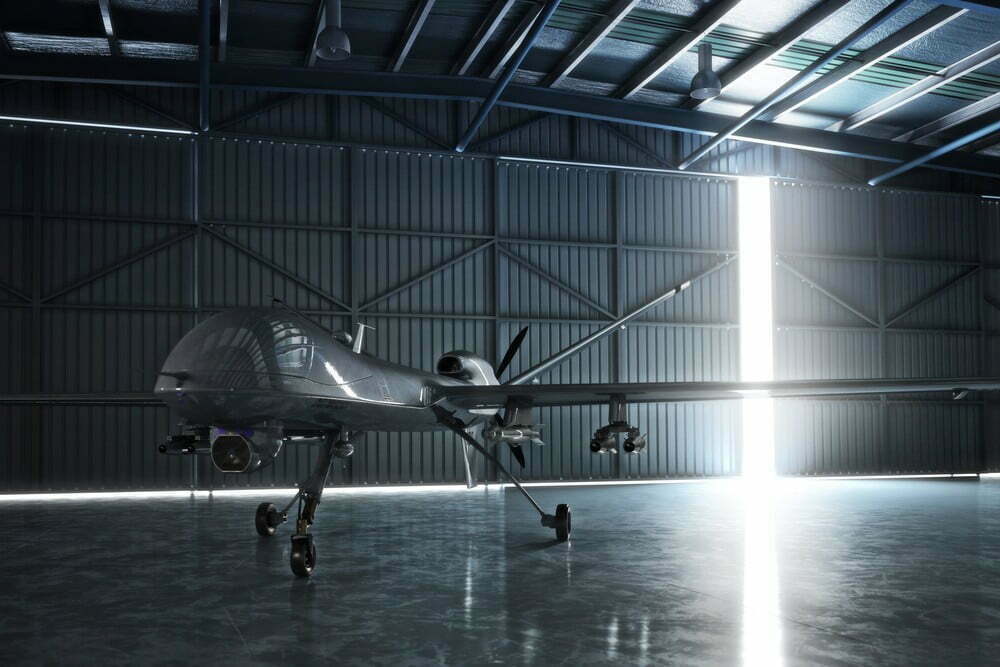
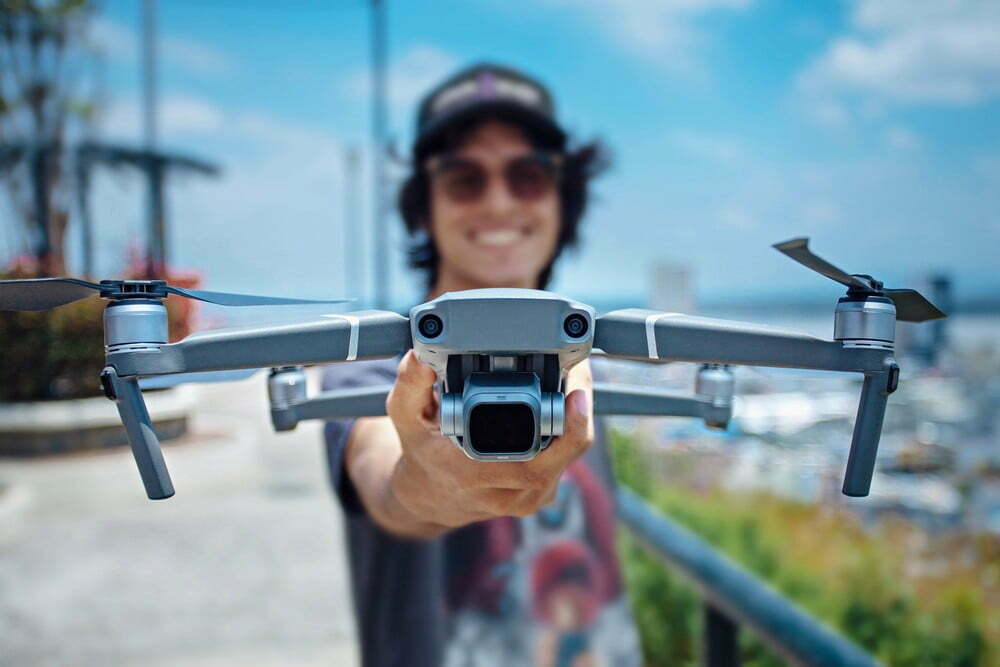
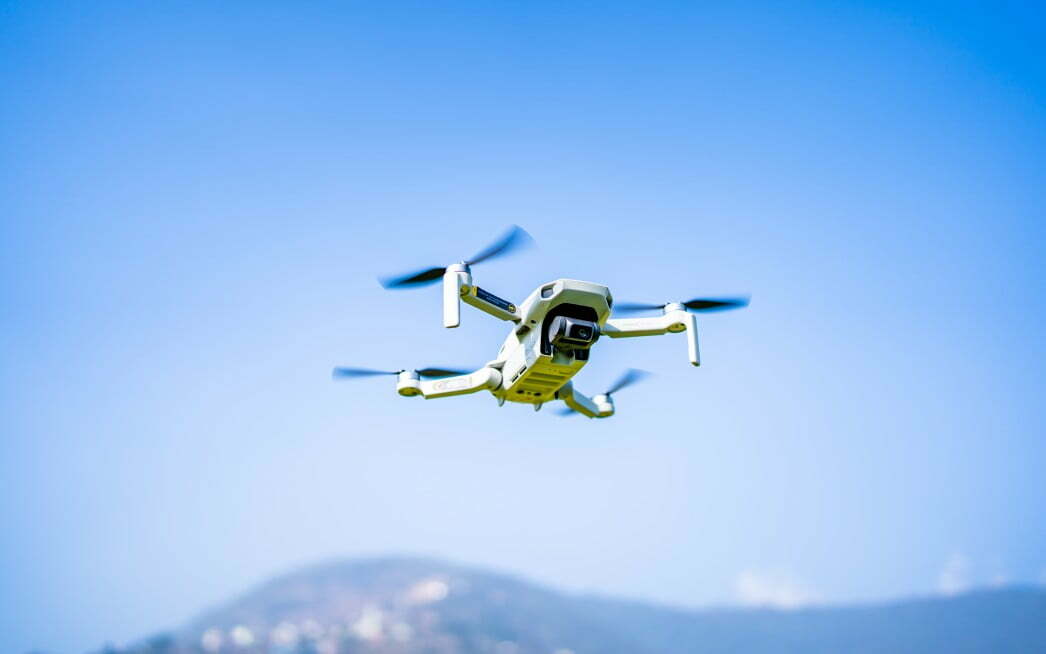
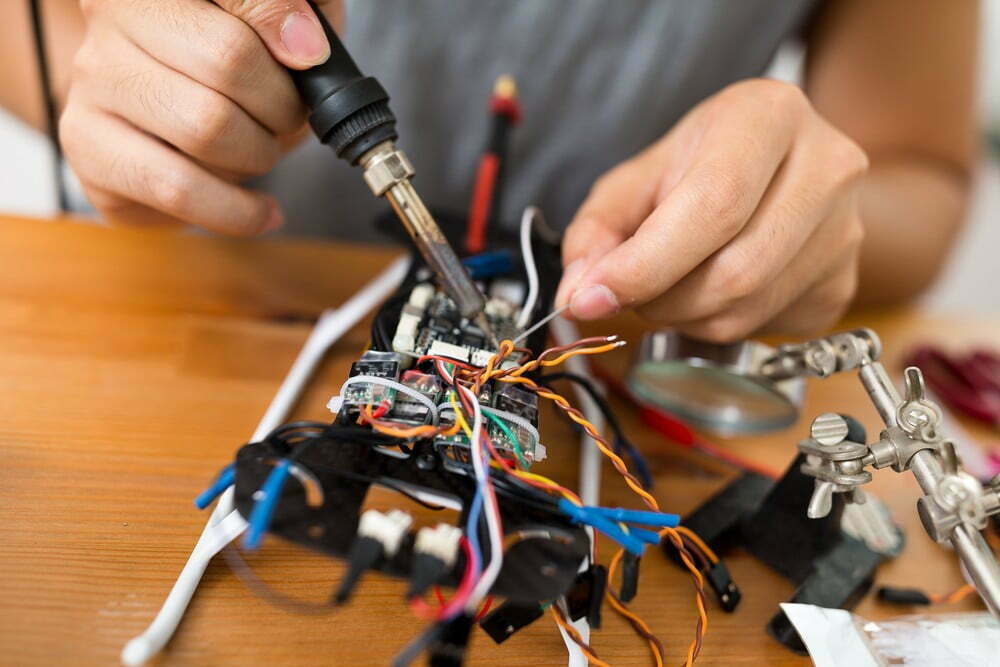
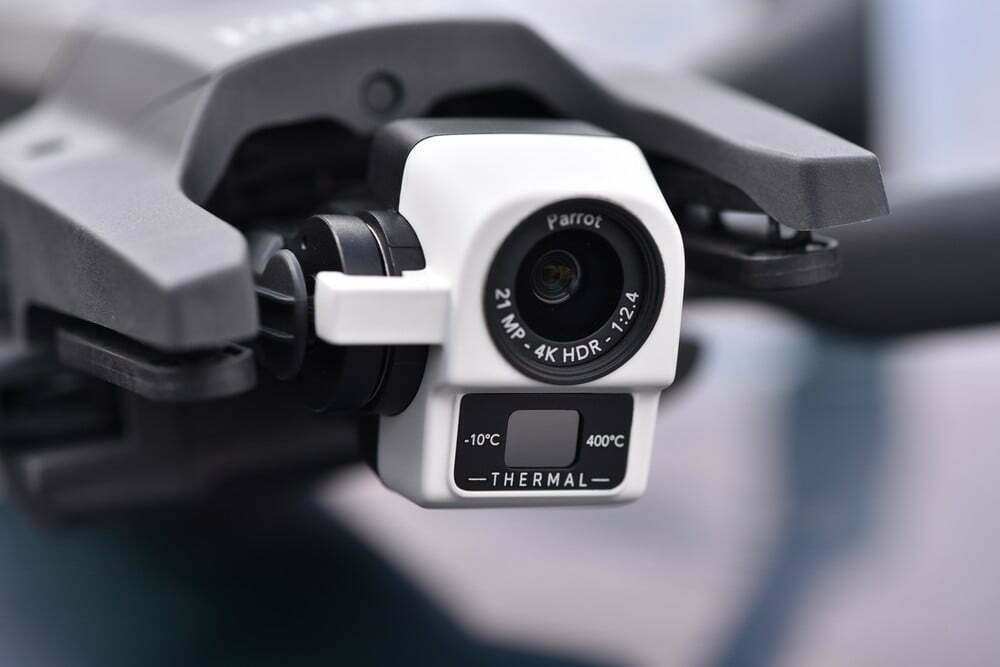
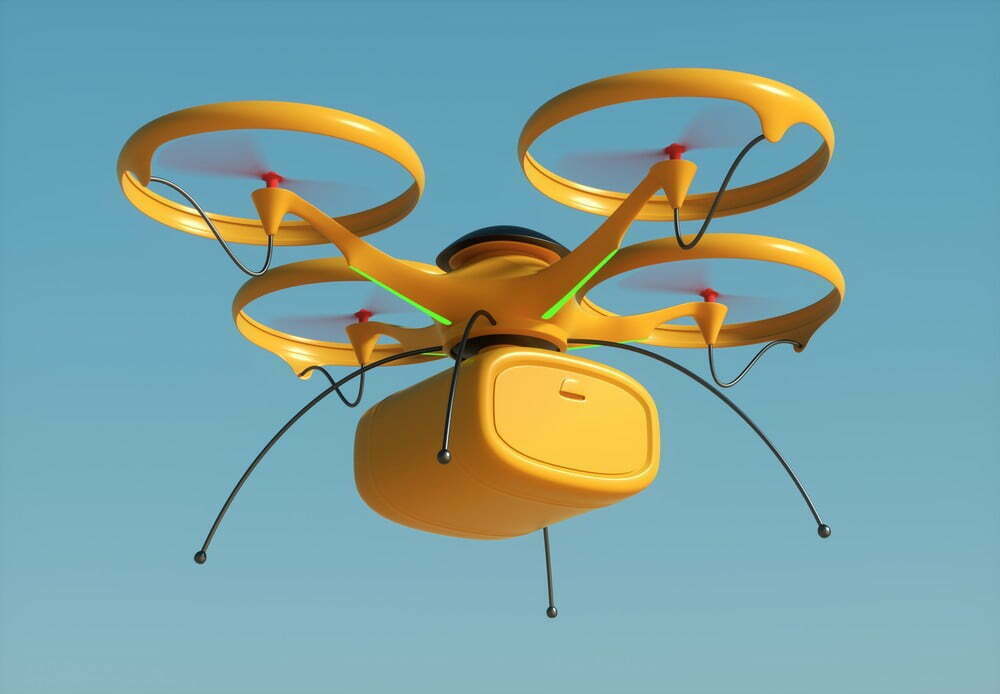
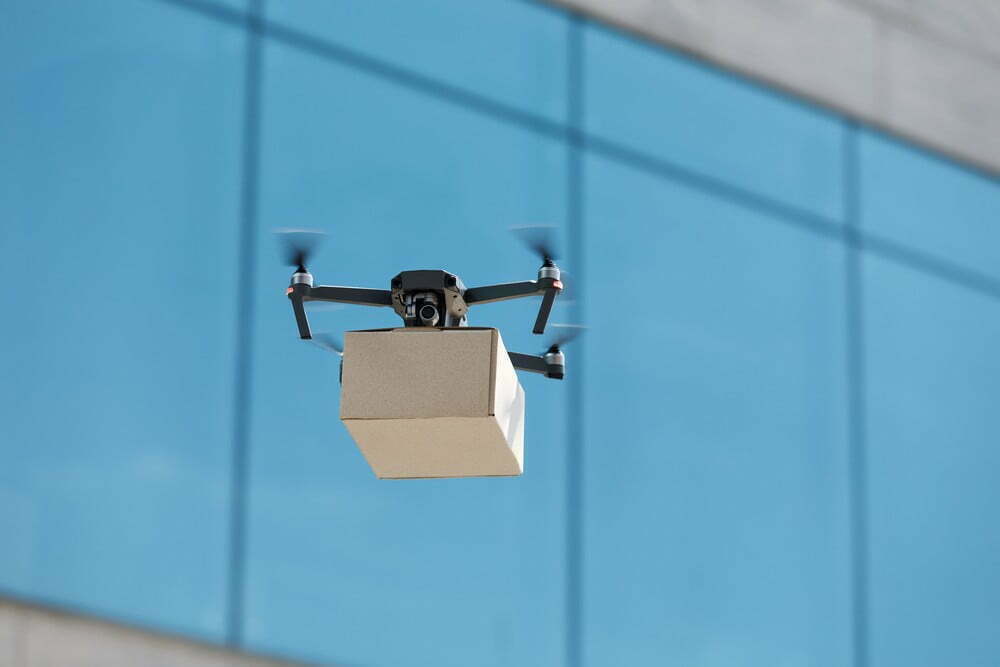
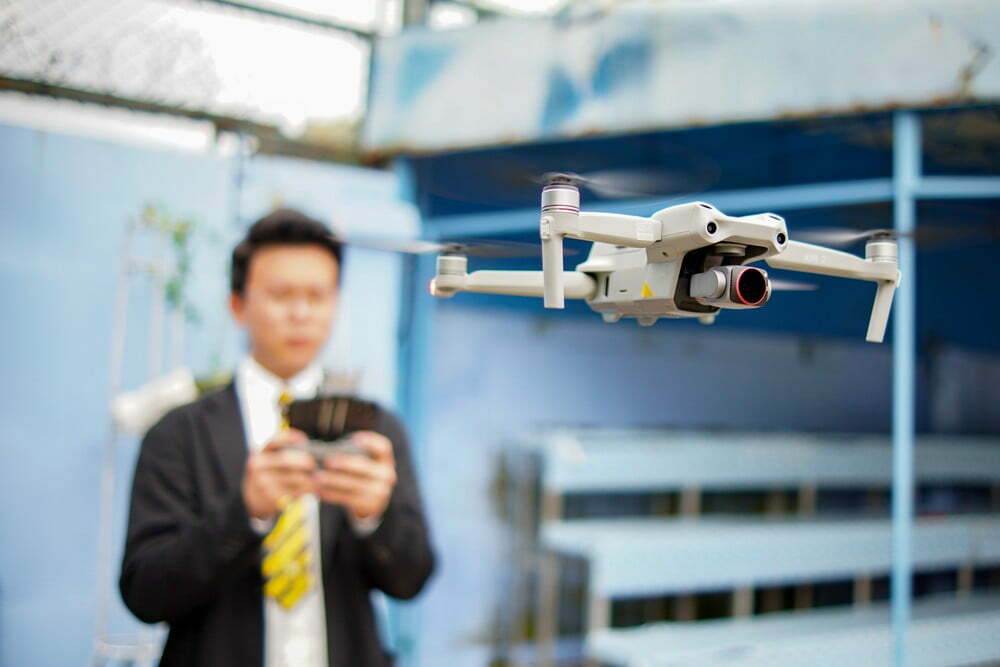
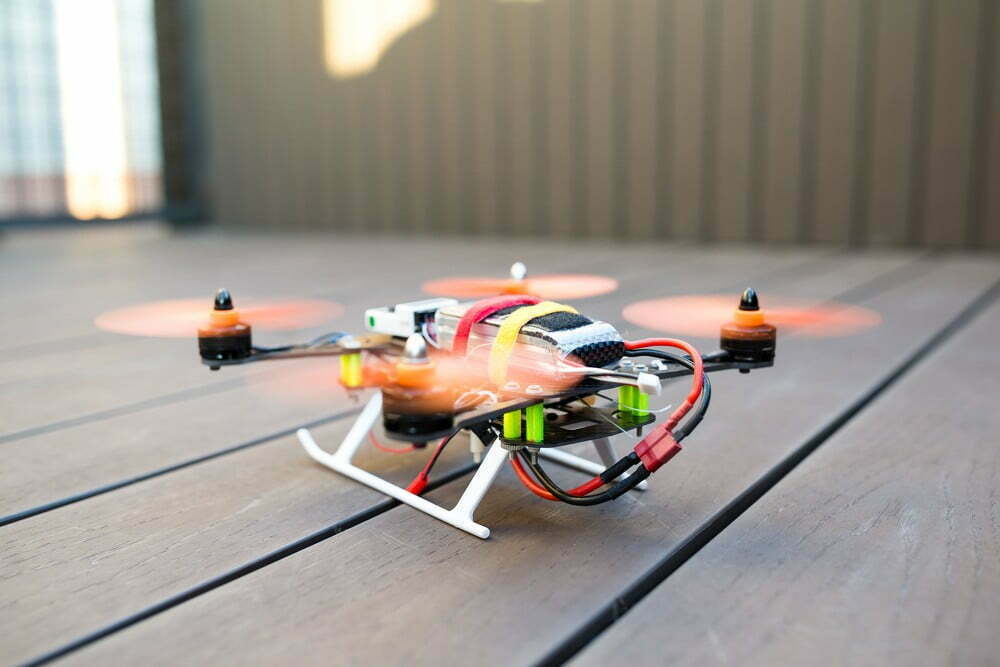
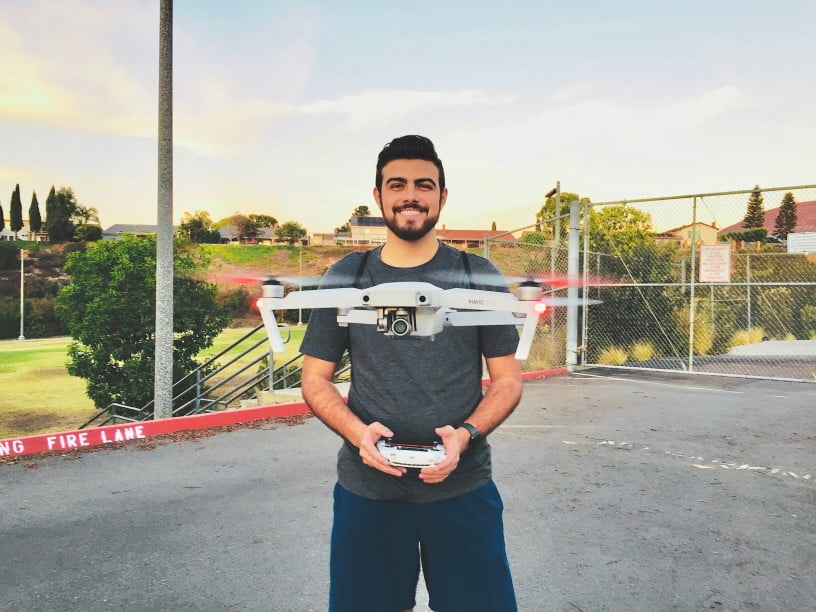
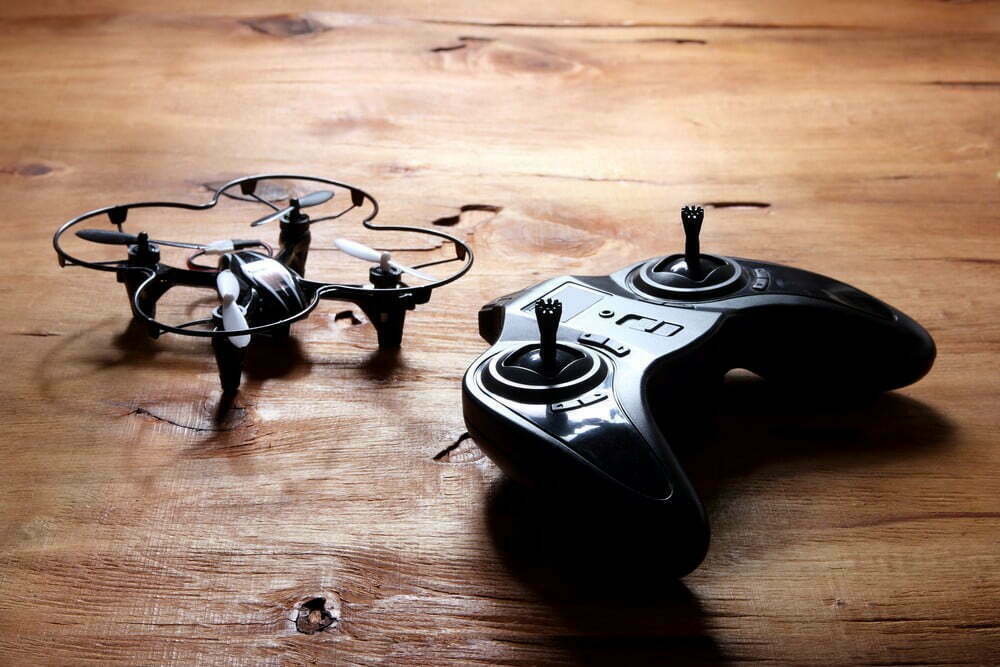
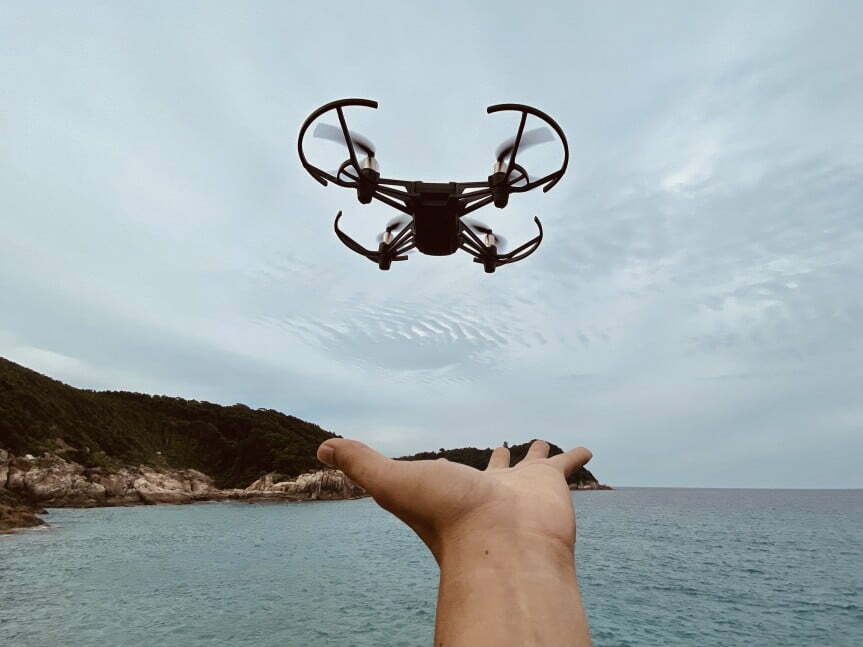
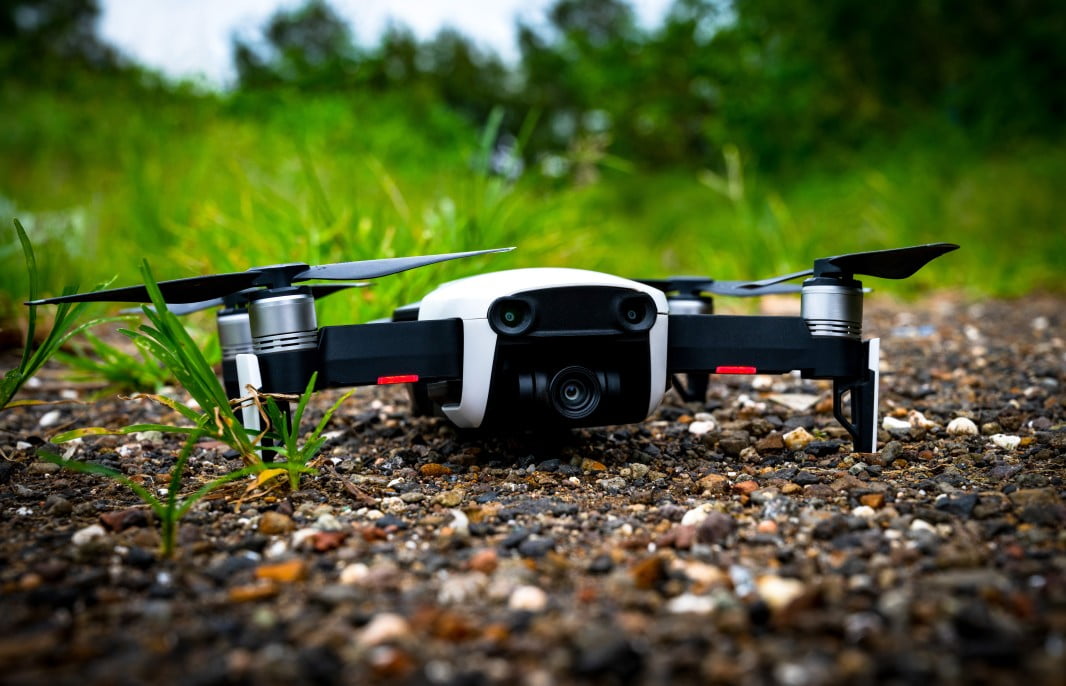
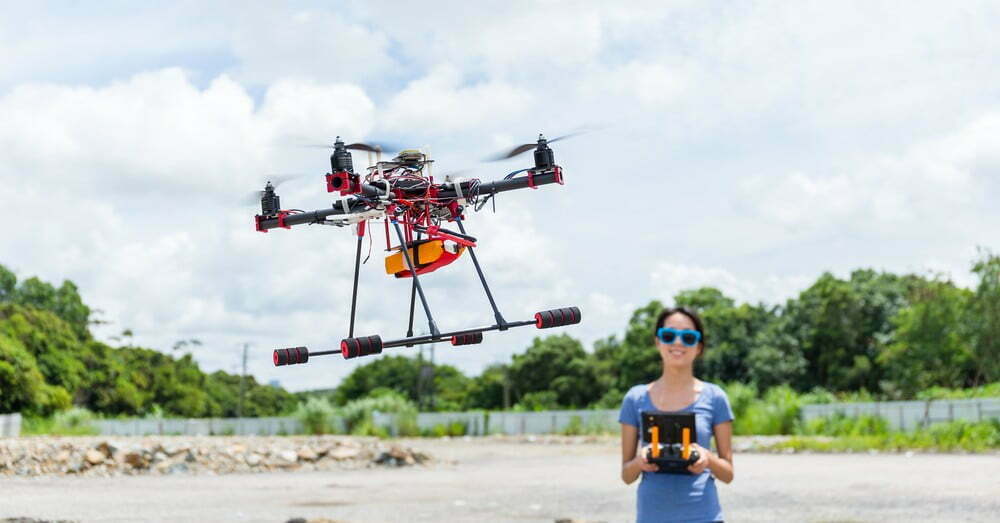
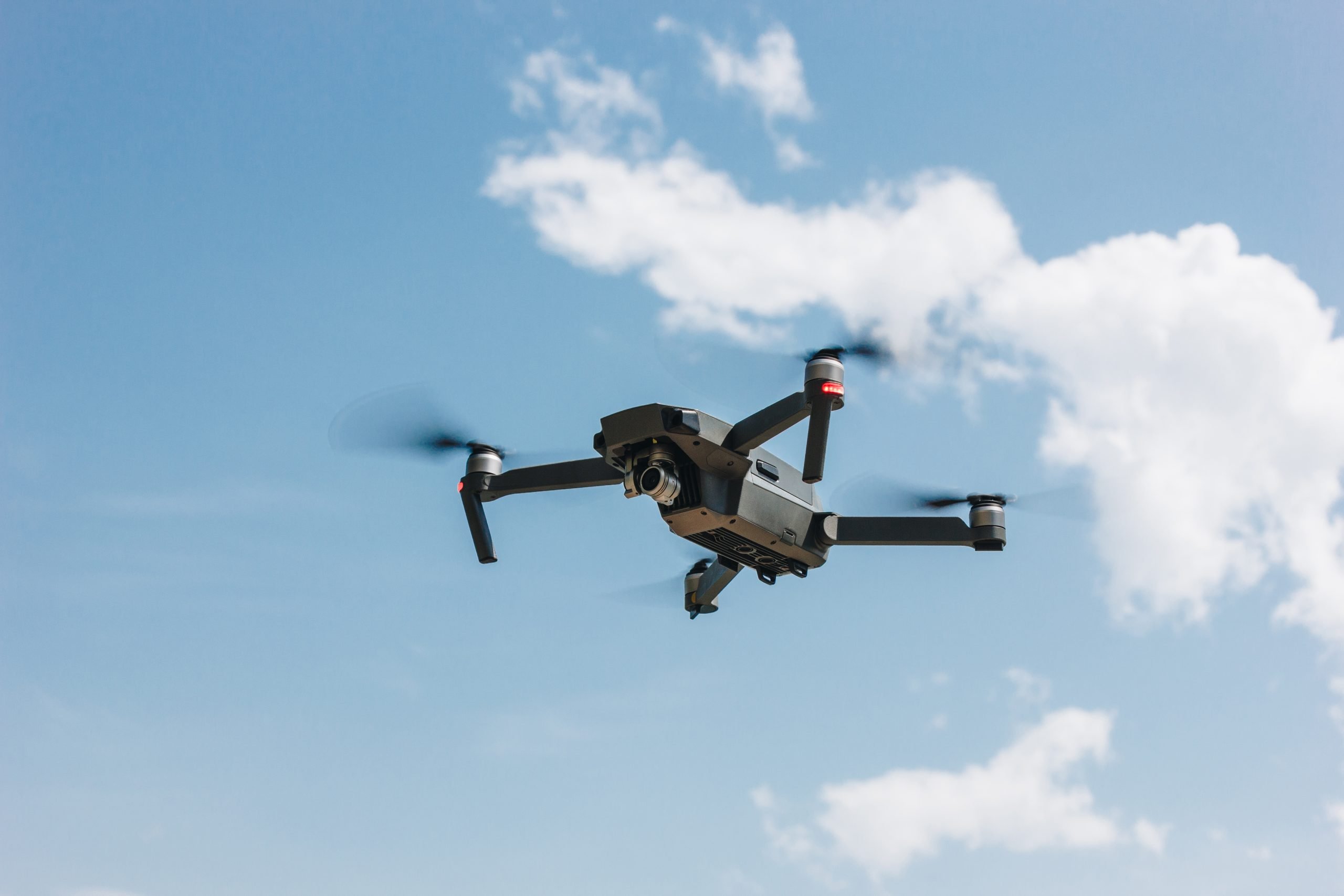
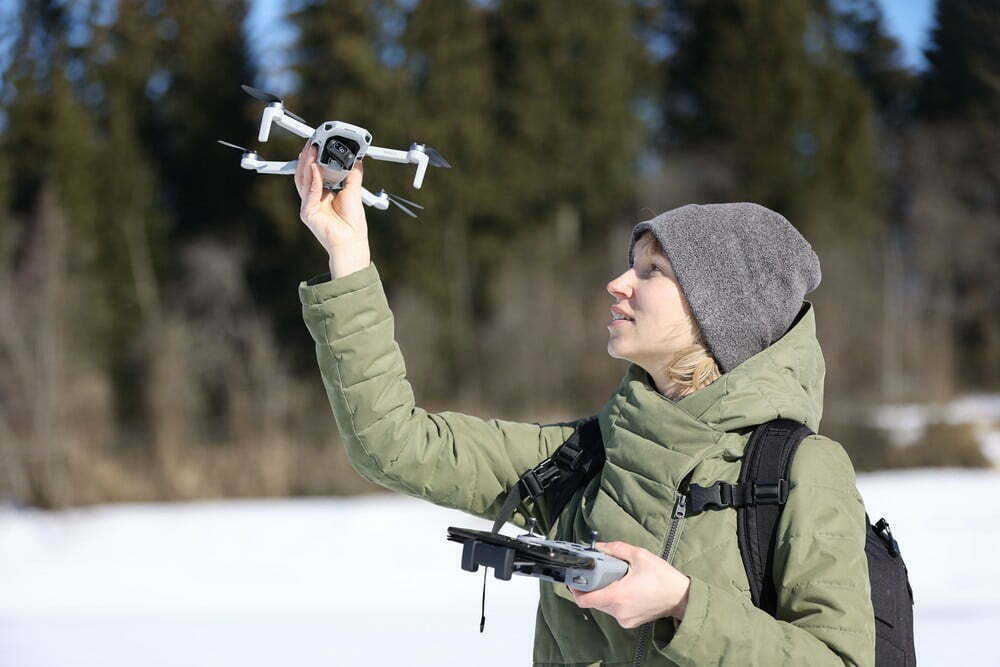
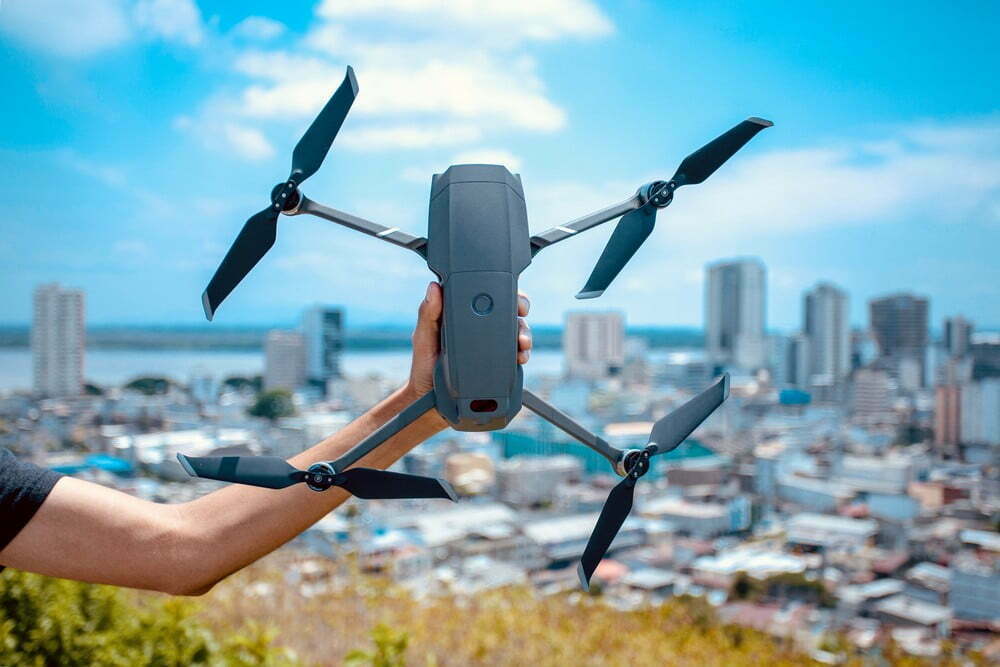
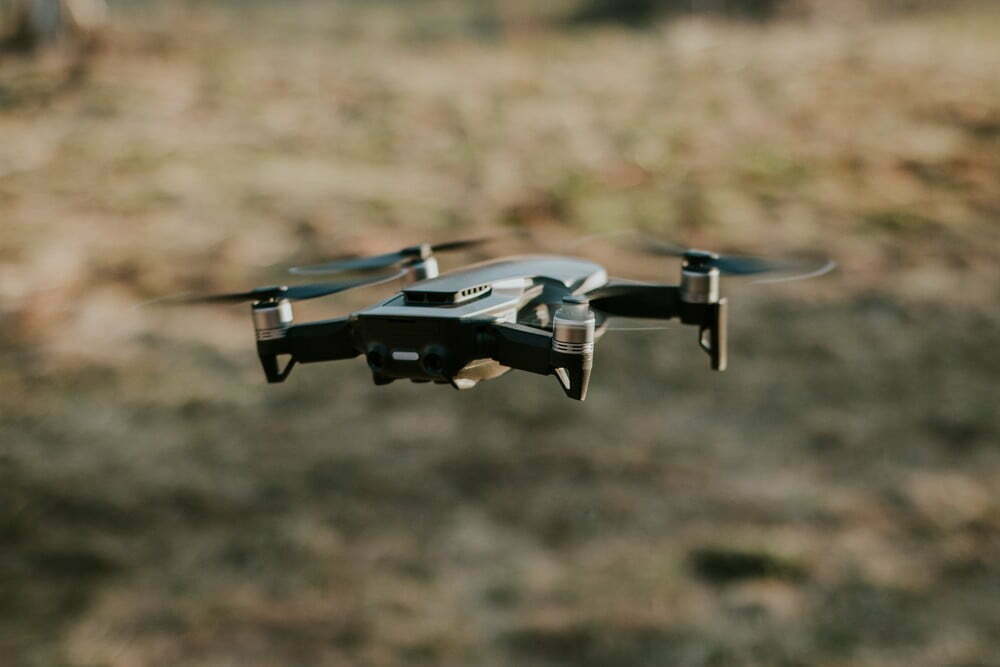
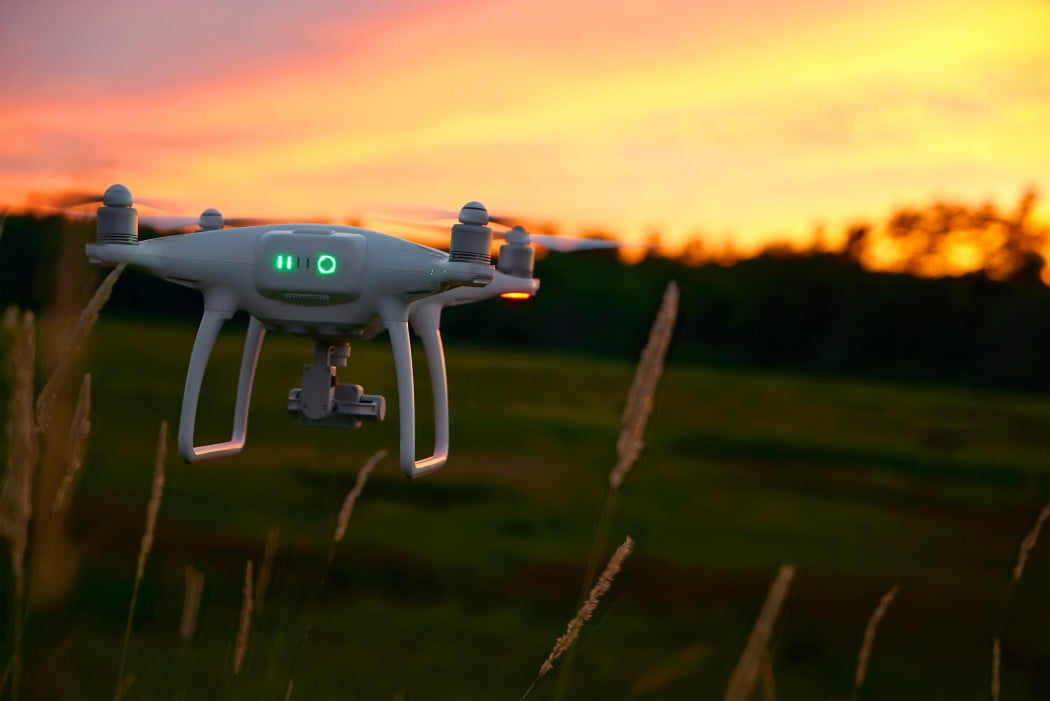
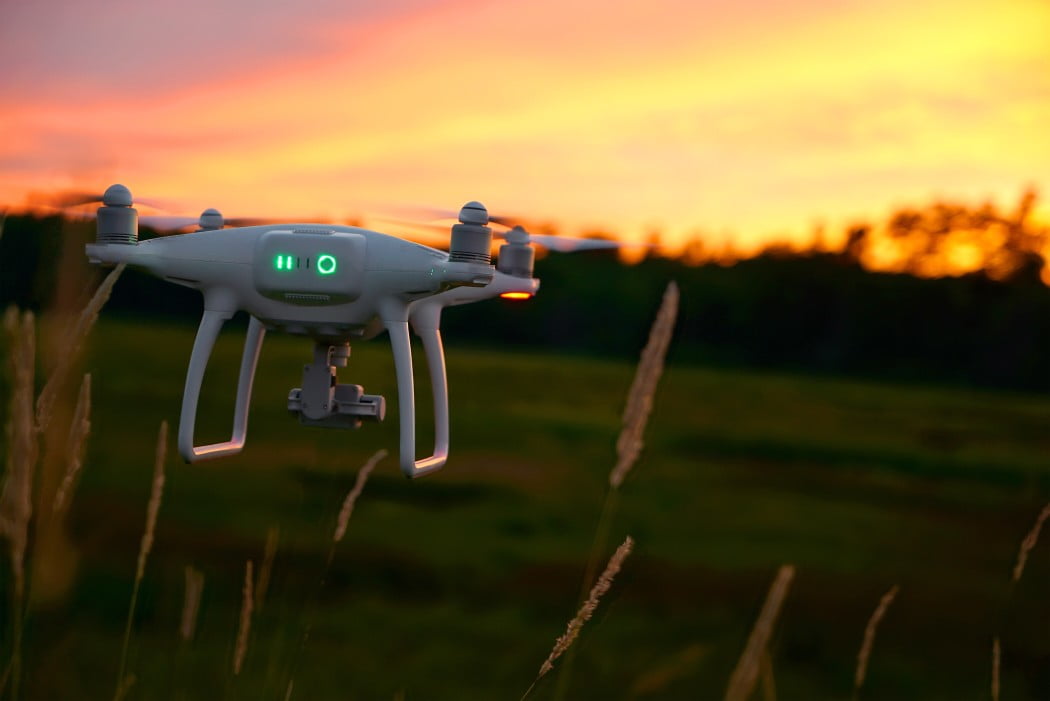
![Best Drones Under the Cost of Ferrari in [year] 35 Best Drones Under the Cost of Ferrari in 2025](https://www.gadgetreview.dev/wp-content/uploads/image-test-3.jpg)
![10 Best Drones for Beginners in [year] 37 10 Best Drones for Beginners in 2025](https://www.gadgetreview.dev/wp-content/uploads/Best-Drones-for-Beginners.png)
![10 Best Indoor Drones in [year] 38 10 Best Indoor Drones in 2025](https://www.gadgetreview.dev/wp-content/uploads/Best-Indoor-Drone.jpeg)
![10 Best FPV Racing Drones in [year] 39 10 Best FPV Racing Drones in 2025](https://www.gadgetreview.dev/wp-content/uploads/Best-FPV-Racing-Drone-scaled-1.jpg)
![10 Best Selfie Drones in [year] 40 10 Best Selfie Drones in 2025](https://www.gadgetreview.dev/wp-content/uploads/Best-Selfie-Drones.jpg)
![10 Best Drones for GoPro in [year] 41 10 Best Drones for GoPro in 2025](https://www.gadgetreview.dev/wp-content/uploads/Best-Drone-for-GoPro-scaled-1.jpg)
![10 Best Drones for Kids in [year] 42 10 Best Drones for Kids in 2025](https://www.gadgetreview.dev/wp-content/uploads/Best-Drone-for-Kids-scaled-1.jpg)
![10 Best Professional Drones in [year] 43 10 Best Professional Drones in 2025](https://www.gadgetreview.dev/wp-content/uploads/Best-Professional-Drone.jpg)
![10 Best Fixed Wing Drones in [year] 44 10 Best Fixed Wing Drones in 2025](https://www.gadgetreview.dev/wp-content/uploads/Best-Fixed-Wing-Drone.jpg)
![10 Best Follow Me Drones in [year] 45 10 Best Follow Me Drones in 2025](https://www.gadgetreview.dev/wp-content/uploads/Best-Follow-Me-Drone.jpg)
![10 Best Foldable Drones in [year] 46 10 Best Foldable Drones in 2025](https://www.gadgetreview.dev/wp-content/uploads/best-foldable-drones.jpg)
![10 Best Drones for Travelling in [year] 47 10 Best Drones for Travelling in 2025](https://www.gadgetreview.dev/wp-content/uploads/best-drones-for-travelling.jpg)
